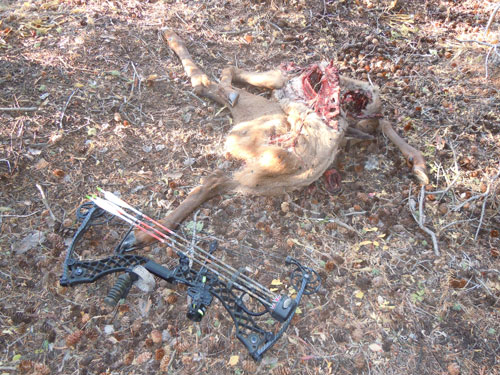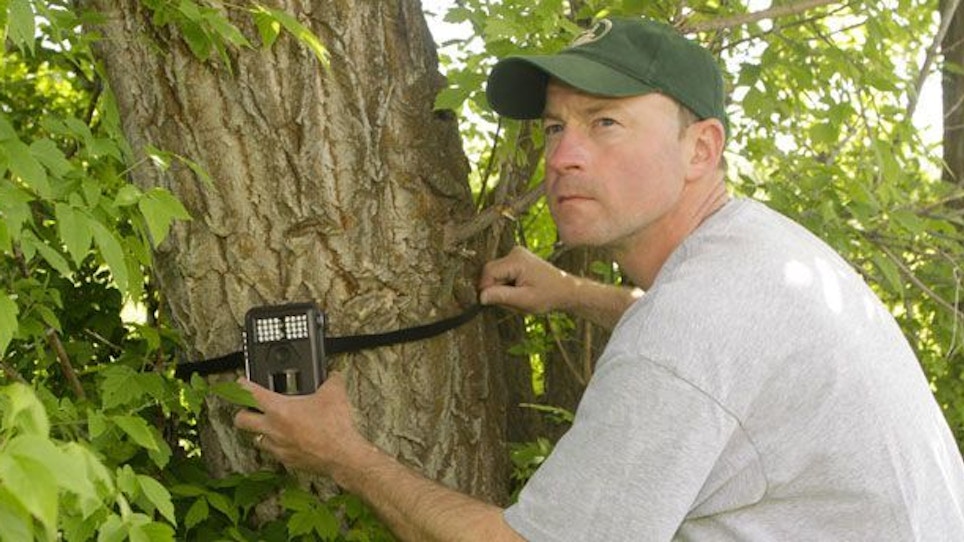Many whitetail hunters in America have trail cameras. The rage is extending into elk country and elsewhere, but should predator hunters take advantage of this craze? I say yes and here’s why.
Trail cameras give you the actual evidence when and where a predator is at in your hunting area. You can place them along trails, at locations where predators may leave scent to stake territory, at carcass sights and anywhere else you think a predator may be lurking.
 Take a look at this photo. I was recently sneaking around the Wyoming mountains and came across the carcass of a recently killed calf elk. I packed into the remote camp with my horses so taking along extra gear would have been difficult, but one item I would have loved to have along is a trail camera. Why? When I revisited this site a few days later the entire carcass was missing except for a small piece of backbone less than seven inches in length. Having a trail camera in place would have given me the evidence whether coyotes, a bear, or the most intriguing predator in my neck of the woods, a wolf, was visiting. I suspect a bear hauled the carcass off to another hidey-hole, but a trail camera would have left me without questions.
Take a look at this photo. I was recently sneaking around the Wyoming mountains and came across the carcass of a recently killed calf elk. I packed into the remote camp with my horses so taking along extra gear would have been difficult, but one item I would have loved to have along is a trail camera. Why? When I revisited this site a few days later the entire carcass was missing except for a small piece of backbone less than seven inches in length. Having a trail camera in place would have given me the evidence whether coyotes, a bear, or the most intriguing predator in my neck of the woods, a wolf, was visiting. I suspect a bear hauled the carcass off to another hidey-hole, but a trail camera would have left me without questions.
If you plan on using a trail camera for predators here are a few suggestions to get the most out of your investment in time and money.
1. Map a route. Since you’ll likely have more than one camera out, map a route out to easily and efficiently move around your property to check cameras. Predators realize humans move about their environment. They quickly determine which highways, county roads, farm roads and field trails have the most activity, and at what times of the day. Use these established routes and any developed trails of your own to buzz in and out to check your cameras.
2. Bait your location. If legal, put bait out to lure in scavenger predators. Table scraps, leftovers from your deer processing and other food products can cause any predator to stop by for a sniff or a snack.
3. Use lure. Trappers have been using lure forever to get animals into setup range. Take a tip from a seasoned trapper and use curiosity and animal lures to get a predator to stop in front of your camera.
4. Set up near water. If you find predator tracks at a water hole set your camera there to capture any thirsty critter. You’ll likely catch a predator on your camera and other animals looking for a refreshing drink.
Good luck and use your trail camera photos for success. If you have any great trail camera images of predators, send them to molis@grandviewmedia.com and they might end up online!






